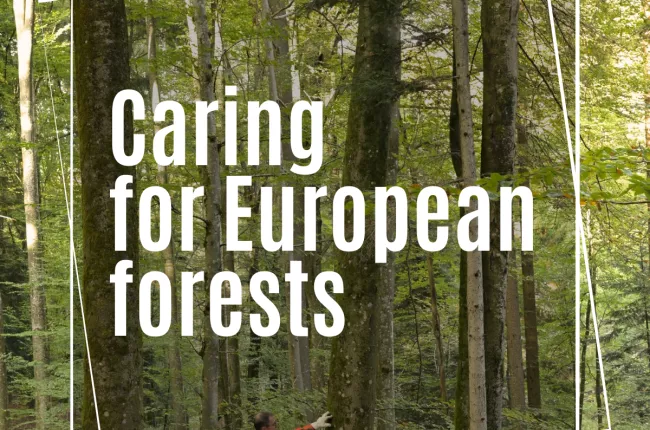The Confederation of European Forest Owners (CEPF) stresses the need to have a realistic, balanced perspective on the potential and contributions of forests and other nature-based solutions when developing the European Water Resilience Strategy.
The water-related services of forests are manifold. On the one hand, well-managed forests can provide natural water purifying services, contribute to the upkeep of ecological flows, and mitigate water-related risk. On the other hand, forests also use water; they need it to grow, stay healthy, and provide a sustainable supply of raw material and other ecosystem services.
In the context of climate change, water services provided by forests are no longer self-evident. Forest fires or massive dieback caused by repeated and prolonged droughts can have a major impact on soil and water. Hence, those affected by water challenges are also affected by the challenges of adapting forests to climate change. European forest owners contribute in keeping waters healthy with climate change adaptation efforts and sustainable forest management practices, such as leaving buffer strips and maintaining the ideal height of groundwater in peatland forests. Thus, forest owners should be adequately considered and supported when discussing forest and water.
Forests can help solve local water-related problems, but potential solutions must be sought by considering the whole water cycle, taking into account other natural aspects, such as climate conditions and soil characteristics. Forests of course exist in the context of these other natural aspects and they can contribute to solving water challenges together, but it must be understood that there is no “one size fits all” solution. European forests are diverse and their relationship with water must always be regarded in their local context.
In summary, when it comes to forest ecosystems, water cycle is important and forest hydrology needs to be paid attention to when managing forests to ensure the continued positive water regulation services that forests naturally provide. But when it comes to the whole European water cycle, from a drop of rain in the mountains to entire oceans, the roles and impacts of forests and their management is not particularly central.
The effects of forests and forest management on the whole water cycle are not always straightforward, and it is important to note that they will not be able to deliver a silver bullet nature-based solution for too many water challenges, many of which go well beyond the forest-water nexus. In the context of the upcoming Water Resilience Strategy, this must be adequately acknowledged.
CEPF looks forward to continuing the discussion on forests and nature-based solutions for the European Water Resilience Strategy.




